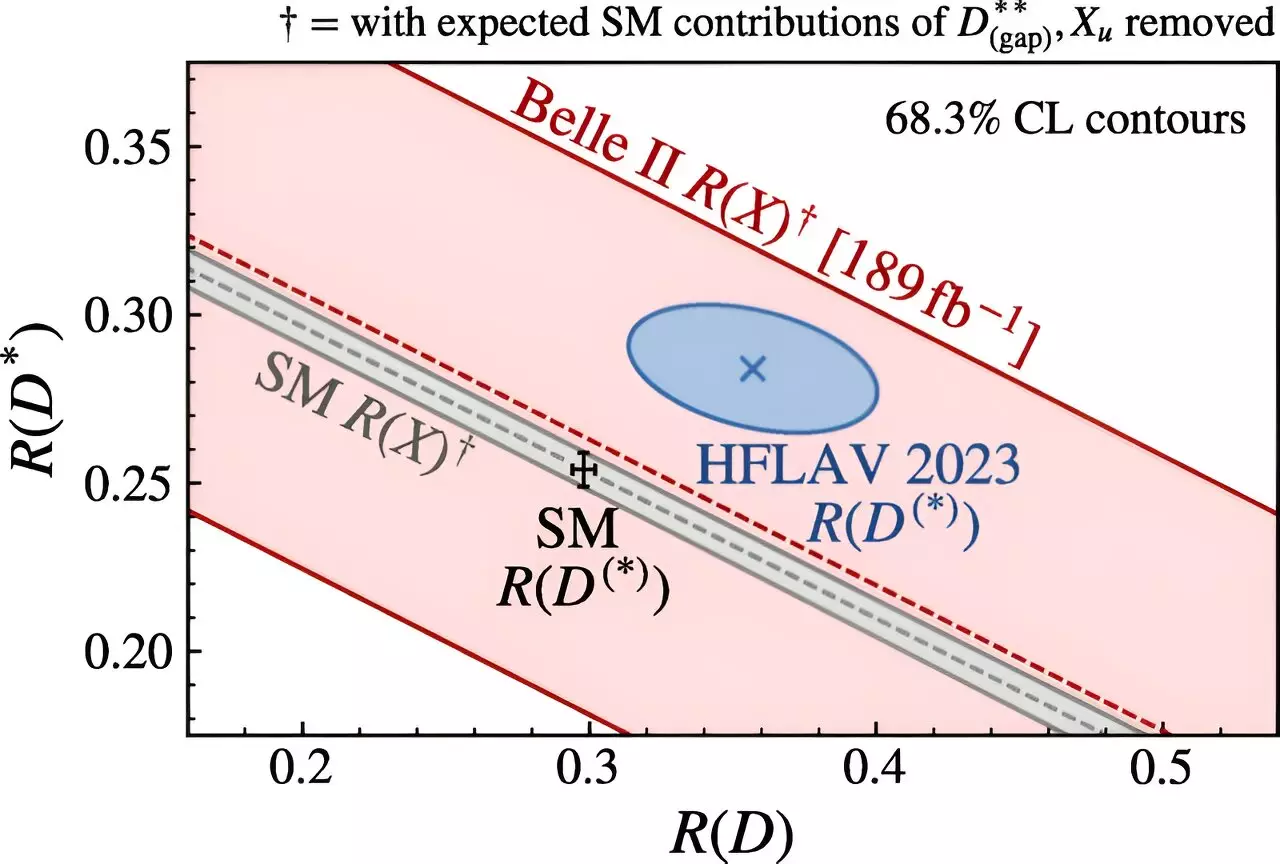The Belle II experiment stands at the forefront of cutting-edge research in particle physics, representing a monumental endeavor aimed at probing the intricacies of weak interactions, exploring exotic hadrons, and searching for yet-unexplored realms of physical phenomena. This research is anchored in the capabilities of the Belle II detector, a sophisticated spectrometer, and the SuperKEKB particle collider, both housed in the High Energy Accelerator Research Organization (KEK) in Tsukuba, Japan. As the scientific community eagerly assesses the implications of these experiments, it’s clear that Belle II is not just gathering data—it is unlocking profound insights into the fundamental workings of the universe.
The Importance of Lepton Universality
A pivotal aspect of the recent Belle II findings, as published in *Physical Review Letters*, revolves around the direct measurement of the tau-to-light-lepton ratio ( R(tau/ell) ) concerning inclusive B-meson branching fractions. This measurement is crucial for testing the principle of lepton universality, which posits that all charged leptons—electrons, muons, and taus—interact with weak and electromagnetic forces in a consistent manner. According to Karim Trabelsi, spokesperson for the Belle II Collaboration, any deviation in this universality could signal phenomena that extend beyond the widely accepted Standard Model of particle physics. The pursuit of understanding such deviations could reveal new particles or interactions previously unobserved, fundamentally reshaping our understanding of the universe.
A New Perspective on Particle Behavior
The Belle II Collaboration’s latest endeavor is particularly notable due to the historical context surrounding prior measurements. Existing data concerning lepton universality have largely depended on decays associated solely with one charmed meson, limiting their scope. Belle II’s approach, however, enables a broader examination that does not filter outcomes by the types of hadrons produced alongside leptons. This inclusive measurement strategy invites a richer and potentially more nuanced understanding of how taus behave in conjunction with other particles during decay processes.
Trabelsi elaborates on the significance of investigating tau leptons as opposed to their lighter counterparts: “The tension between observed measurements and theoretical predications of universality necessitates a fresh perspective,” he notes. By directly measuring the ratio involving the τ lepton, Belle II aims to close discrepancies that have lingered in scientific literature, enhancing the quest for authenticity in particle behavior and interactions.
Methodology: A Technical Revolution
The technical approach deployed by Belle II is both innovative and intricate. By analyzing data from B meson production during electron-positron collisions, the collaboration meticulously reconstructs decay events to identify and differentiate between prompt leptons and those arising from tau decays. The distinction is significant because tau decays typically yield leptons with lower momentum due to the additional energy carried away by neutrinos.
Tools such as lepton momentum distributions and missing energy variables play critical roles in refining these measurements. These methods reflect a sophisticated calibration process aimed at minimizing background contamination, ensuring the accuracy and reliability of their results. Despite the presence of systematic uncertainty in the measurements, Trabelsi is optimistic—given the increasing volume of data, these uncertainties are expected to diminish, further enhancing the precision of upcoming analyses.
A Gateway to New Physics
The implications of Belle II’s recent findings extend far beyond mere data generation; they forge pathways toward uncovering new physics. The potential for lepton universality violations could herald the discovery of non-standard-model particles, providing crucial insights into forces and interactions yet to be fully understood. The collaboration’s commitment to refining its measurements and methodologies remains steadfast, as they strive to provide the broader scientific community with data that could recontextualize established theories.
As the Belle II experiment continues to evolve, researchers remain dedicated to expanding their understanding of particle interactions. The prospect of more extensive data collection coupled with the recent advancements in analytical techniques holds promise for future breakthroughs. With announcements of new results on the horizon, the excitement surrounding Belle II’s contributions to particle physics is palpable.
In essence, Belle II represents not just a leap forward in measurement capabilities, but a transformative journey into the depths of matter and the cosmos. The quest for answers in the field of particle physics has taken a dynamic turn, with Belle II leading the charge into an exciting age of discovery.

